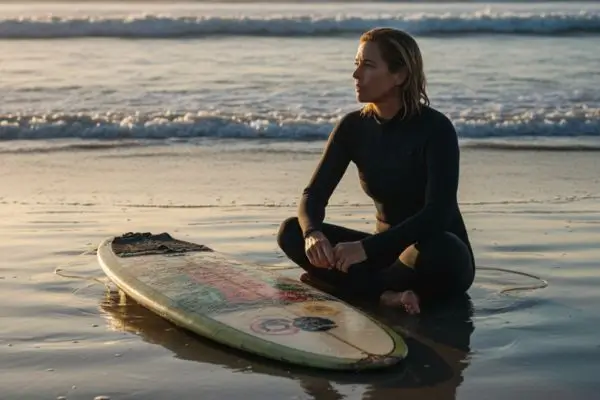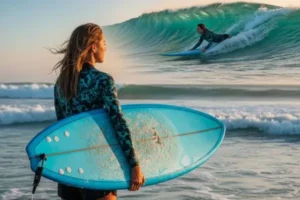Surfing is not just about standing on a board and riding waves. Behind every good session lies an invisible skill: the ability to read the ocean. For women surfers, especially those at the beginning of their journey, learning how to interpret swells, tides, winds, and currents is what transforms random attempts into consistent progress.
Understanding the ocean means recognizing its rhythm, anticipating changes, and adapting to conditions. This knowledge builds confidence, improves safety, and makes every wave more enjoyable.
The Role of the Swell
The swell is the starting point of every wave. Generated by winds far out at sea, swells carry the energy that eventually arrives on the shore. Knowing how to interpret swell data can help surfers predict the quality of their session.
- Long-period swells usually create more organized and powerful waves.
- Short-period swells tend to produce smaller, choppier conditions.
Checking surf forecasts for swell direction and period is one of the simplest ways to prepare before even stepping onto the beach.
How Tides Shape Waves
Tides have a direct impact on the way waves break. Depending on whether the tide is rising or falling, the same beach can offer very different surf experiences.
- High tide often results in softer waves that are easier for beginners but less powerful.
- Low tide can create faster, steeper waves and sometimes expose hazards such as rocks or reefs.
- Mid tide is often the most balanced time for a surf session, especially for learners.
Keeping a tide chart at hand is an invaluable habit for surfers aiming to maximize wave quality and safety.
The Influence of Wind
Wind is another key factor in reading the ocean. It can either enhance wave quality or make conditions difficult.
- Offshore winds hold the wave face open longer, creating cleaner lines to ride.
- Onshore winds break waves prematurely and make the surface choppy.
Beginners will often find that mornings provide calmer winds and better surfing conditions.
Understanding the Lineup
The lineup is where surfers position themselves to wait for waves. Reading this part of the ocean requires attention to detail.
- Peaks are the sections where waves begin to break.
- Channels are areas with less breaking activity, making them ideal for paddling out.
- Rip currents can be dangerous if misused, but experienced surfers often use them to re-enter the lineup more efficiently.
Learning to recognize these elements makes positioning easier and improves wave count.
Recognizing Wave Behavior
Once in the water, women surfers must learn to identify how a wave behaves before committing to it.
- Lefts and rights determine the best direction to ride.
- Closeouts break all at once, offering no room to maneuver.
- Peeling waves break gradually, providing a longer, smoother ride.
A useful rule is to watch several waves before choosing one. Observing how they rise, break, and reform gives insight into patterns that may not be obvious at first glance.
Developing Ocean Awareness
Reading the ocean is not a skill learned overnight. It takes repeated practice, observation, and patience. Each session provides an opportunity to notice something new: the way the tide changes the break, how wind shifts during the day, or how swells of different periods feel in the water.
For women surfers, developing this awareness is about more than just performance. It is about building trust in oneself, feeling secure in the lineup, and strengthening the connection with the sea.
A Skill That Unlocks Progress
The ability to read the ocean is one of the most valuable skills a surfer can acquire. It saves energy, reduces frustration, and significantly increases the number of successful rides. Over time, wave selection and positioning become second nature, allowing the surfer to flow with the sea rather than fight against it.
For women starting their surfing journey, this knowledge turns the ocean from something intimidating into something familiar and inviting. The more you observe, the more fluent you become in the language of the waves. And with fluency comes freedom — the freedom to enjoy the ocean at its fullest.




